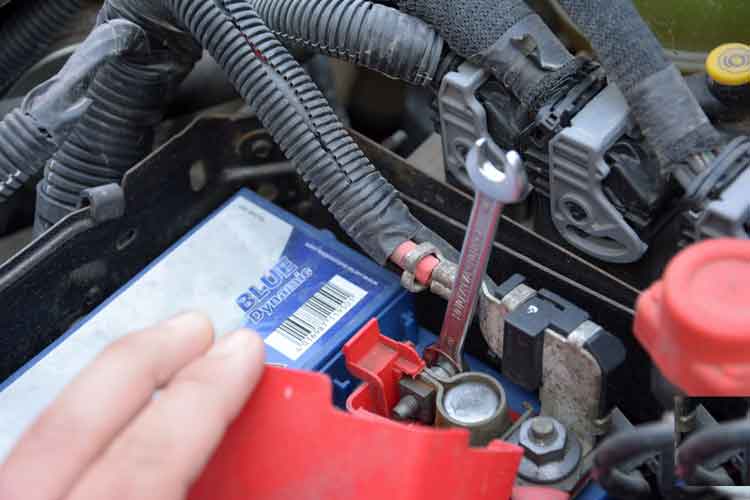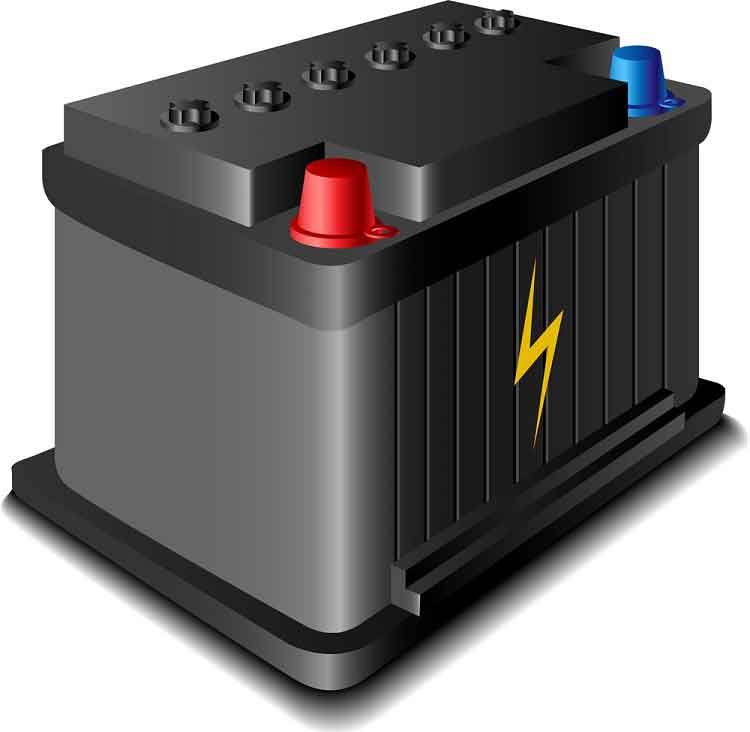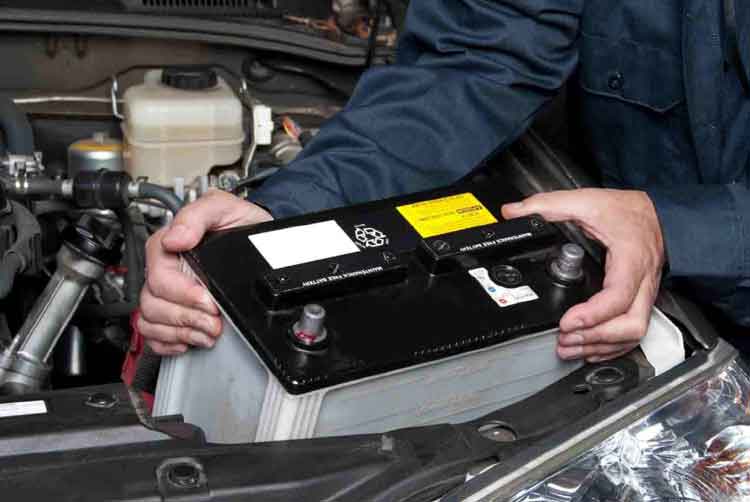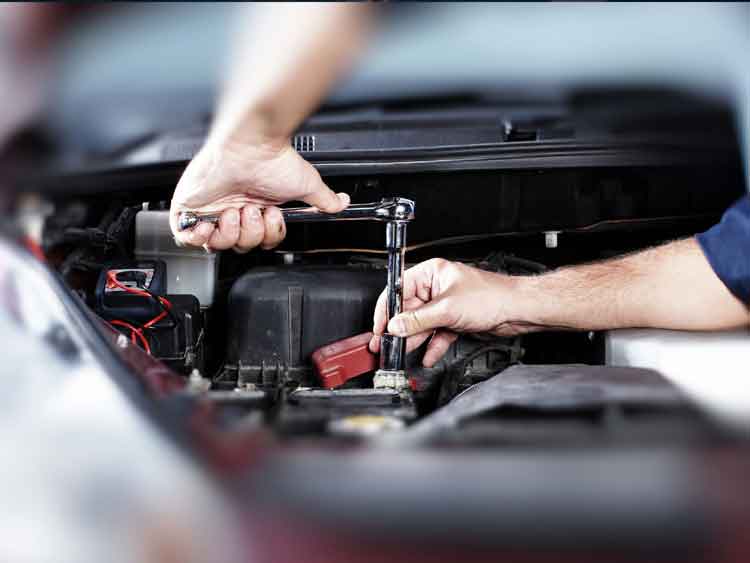
All cars have batteries. Diesel and petrol cars are usually powered by lead-acid batteries that have a 12V electrical system for the lights, stereo, and heating. Lead-acid batteries last for several years but are not energy-dense like their lithium-ion counterparts.
Changing a car battery is not a frequent process. Car batteries in conventional vehicles are unlikely to be fully drained before recharged. They are topped up with an alternator.
If you find that your car’s electrical system is having problems, it could be because of a sluggish battery.
Contents (Jump to Topic)
Changing a Car Battery : Step by Step
Tools needed to Change a Car Battery

Image Credit: Digital Trends
Removing a car battery requires certain tools and you must keep them handy before you start the process. The battery cables are held in their place by nuts and bolts. This means you’ll need an adjustable wrench, vise pillar, socket wrench, and a crescent wrench.
A 10mm socket or wrench is an important car battery removal tool, as most batteries have cable nuts of this size.
Another pair of adjustable pliers is required to hold the bolt-head.
A medium-sized hammer will also be helpful as you may need it to loosen stubborn terminal cables from the battery.
Other tools may include a battery terminal cleaner. This is an inexpensive and handy tool to brush off the corrosion and sulfur deposits from the terminal posts and cable-ends. The cleaner also primes the posts of a new battery, ensuring a better connection. A narrow, metal wire brush can also do the trick. While buying a terminal cleaner, get a corrosion protection solution that prevents future sulfate buildup.
Lastly, a pair of strong gloves will keep your hands protected.
Also Read: How To Clean Alloy Wheels
Steps for Changing a Car Battery
How to change a car battery? Here are some steps to follow:
1. Locate the Battery

Image Credit: Kelley Blue Book
In most cars, the battery unit is located at the corner of the engine bay. Some older units have batteries with a plastic cover.
Also, some manufacturers like BMW install their batteries in the trunk space or under the rear seat to save space.
Read the owner’s manual about where the battery is located. Before you disconnect the battery, make sure that you know the car’s stereo code. Some car stereos will require a code to start when you reconnect the battery.
2. Disconnect the Battery

Image Credit: YouTube
The positive and negative terminals of the battery are connected to the vehicle’s electrical system through metal terminals.
Most batteries have quick-release terminal clamps for easy removal. You may have to loosen up the ends using a wrench. The size of the bolt is either 10mm or 13mm.
Some cars use 7mm bolts or an entirely different size.
3. Remove the Battery Hold-down

Image Credit: Auto Express
Having disconnected the terminals, you still can’t pull out the battery from its place. The unit is likely to be held down by a clamp which is usually a metal strap. Use the appropriate socket wrench and an extension bar which is long enough to reach the bolts on the battery unit.
4. Remove the Battery and Inspect Terminals

Image Credit: WikiHow
A car battery is heavy and may often weigh more than 20 pounds depending on the size of the vehicle it powers.
Inspect the terminal-ends before installing a new car battery. Check for greenish or whitish powder build-up which you’ll have to clear off with sandpaper or emery cloth to keep the charging system in proper condition.
A 100-grit sandpaper works fine to keep the terminal’s inner parts shiny. Battery acid is corrosive. So wear gloves while inspecting the terminals.
5. Install the new Battery

Image Credit: Kelley Blue Book
Having removed the exhausted battery, put the new unit in its place, and don’t forget to tighten the hold-up.
Almost all new batteries have anti-corrosion washers to keep the terminals free from grease and dirt.
Connect the positive terminal first but ensure that the wrench doesn’t come in contact with the battery’s metal parts.
The cable should be tightly fixed. But at the same time, ensure that you don’t over-tighten them. Repeat the steps for the negative terminal.
6. Dispose the Old Battery Properly

Image Credit: VARTA Battery World
As already said, lead-acid batteries are corrosive and contain toxic components. While changing a car battery is a fairly easy process, they need to be responsibly disposed of.
Most battery manufacturers exchange old batteries with a new unit. There are also recycling units where you have to pay a nominal amount to dispose of the used battery.
According to the US Environmental Protection Agency, nearly 96 percent of all lead-acid batteries can be recycled. Whatever you do, never throw the used battery in your daily garbage bin.
Also Read: How to Tow a Car and 10 Tips for Towing a Car
Tips for Changing a Car Battery
Here are some important tips to keep in mind while changing a car battery:
1. Get a Professional
It’s okay if you are not comfortable with changing the battery yourself. Call the nearest battery shop or your local garage and leave it to the professionals. There’s also an added advantage. Some shops waive the labor charge if you buy the new battery from them. But make sure you call them ahead of time. Many chains operate independently and may add terms and conditions on a ‘free’ offer.
2. Jumpstart with Caution
Exhausted batteries can be jumpstarted to buzz your car for one final time. However, make sure you do that correctly. A separate kit is available to jumpstart dead batteries. But jumpstarting involves safety issues and is best handled by professionals.
3. Avoid Flames, Heat, Sparks
Any source of ignition can lead to a fire or may even cause an explosion if they come in touch with flammable car parts or the battery unit. Whether you are jumpstarting or changing the battery unit, keep all sources of fire away. Stub out the cigarette and remove all spark-able items.
4. Don’t come in Contact with the Acid
Car battery acid is poison. While handling the battery, wear proper clothes, including gloves and close-toe shoes. If you accidentally come in contact with the battery’s fluid, thoroughly wash the area with clear water and call your doctor.
Also Read: 21 Best Car Modifications That Add Value To Your Car
Final Thoughts
If fuel is the lifeblood of a car engine, the battery is its pulse. There’s nothing worse than after switching on the ignition the only thing you hear is a clicking sound, followed by silence. A boost or a jumpstart may temporarily help. But changing a car battery will better serve the purpose in the long run.
